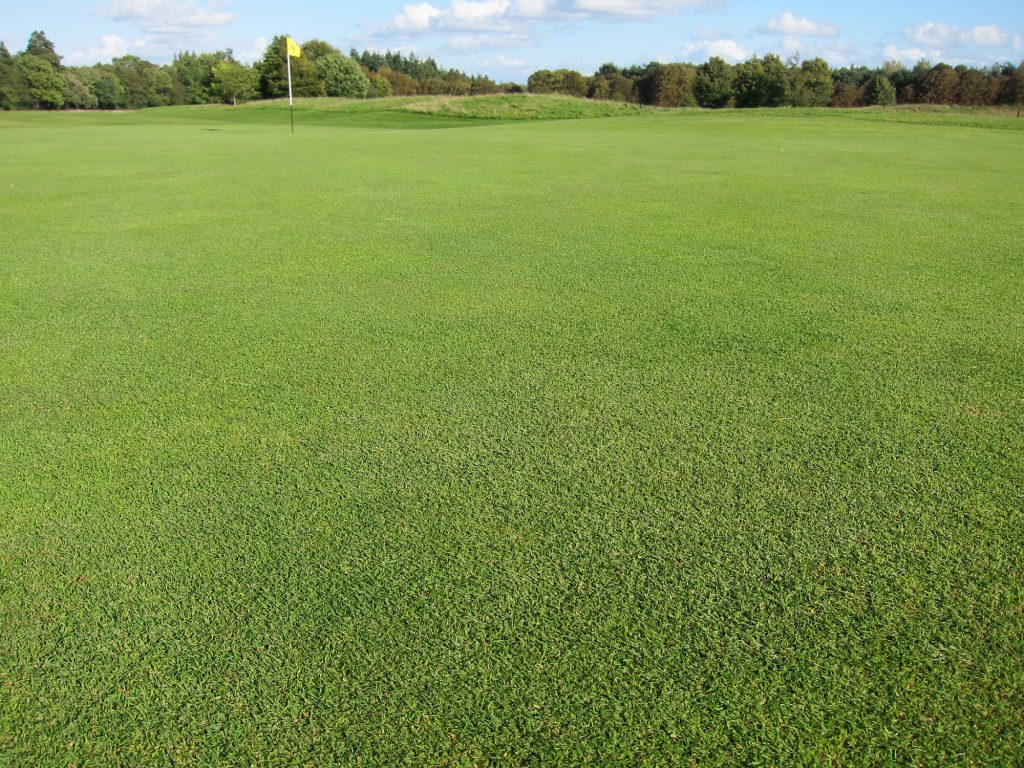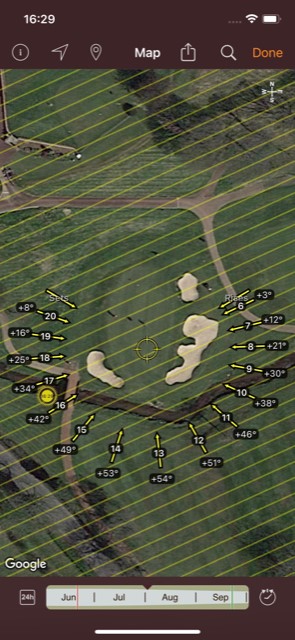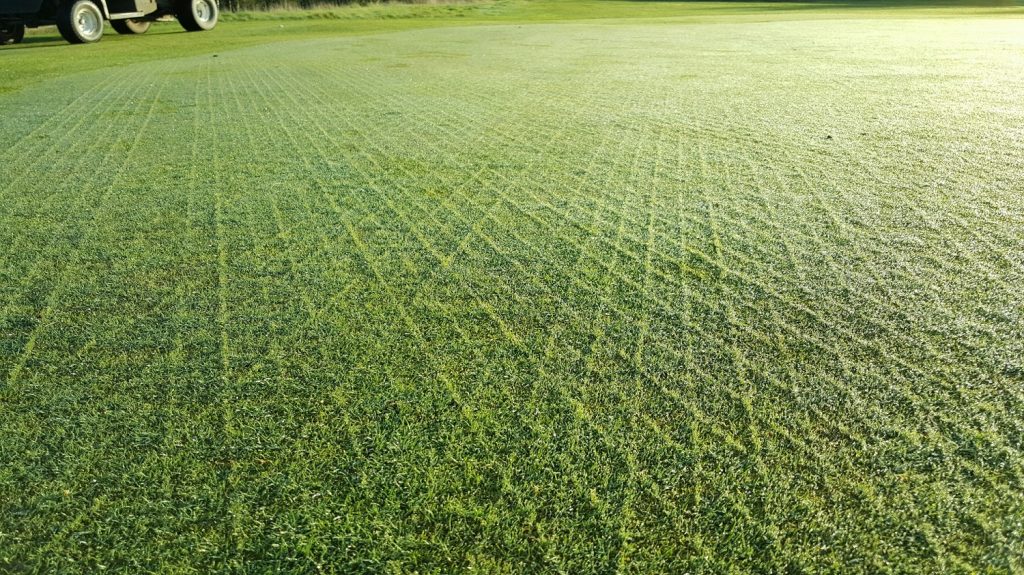Getting the best from your bent overseeding programme
Related Articles
Delivering fast, attractive, highly resilient putting surfaces with increased rounds and greater player satisfaction – all with reduced chemical inputs and costs – it’s no wonder in recent years that Colonial Browntop Bent grass (Agrostis capillaris) has seen a resurgence in popularity for golf greens. However, increasing Bent populations doesn’t happen overnight. Some careful consideration of mechanical and nutritional approaches is required to maximise the efficiency of a bent overseeding programme. Northern Regional Technical Manager for DLF & Johnsons Sports Seeds Stuart Yarwood explores.
As a perennial grass, Browntop Bent has always been a popular species but arguably, with increasing awareness around the development of sustainable surfaces, it is in favour now more than ever. However, we all too frequently see some people run before they can walk with it.
Think of it another way… You can’t walk into a field, with a bucket of fish and throw those fish into the field and expect them to live! You have to dig a pond, do the groundwork and check the water quality otherwise you will be forever just throwing fish into a field (and, sadly, there will always be people out there happy just to sell you more fish!).

What we need to do first of all is create the ‘pond’, and by that we mean creating an environment that will support and favour Bent over other species such as Annual Meadow grasses, Poa Annua. Sunlight is the best fertiliser so, ideally, you want to clear shade causing trees and vegetation from your east and south horizons, allowing better sun and airflow, creating a drier environment which can also help to reduce disease. The removal of trees can be tricky, and potentially political. Apps such as Sun Seeker illustrate the suns position at different times of the year and can be a useful way of justifying your argument to your committees and decision makers. Be sure to always check local forestry legislation before undertaking any work.
While Bent enjoys VMC moisture levels of 10-20%, providing competition over the Poa Annua, it is also not an aquatic species meaning water management is key for achieving success with your programme. Check the drainage and infiltration rate of your greens and, if required, make amendments to your aeration programmes. Utilise different tines, at different times and at different depths to facilitate that downward moisture movement and incorporate wetting agents if you need to. Thatch is also not conducive to the survival of bent grasses so, if you have high levels of that, have a think on why that may be the case – maybe more aeration is required or do nutritional inputs need to be reduced?
It can be a hard and slow transition to Bent grasses, and some of the changes that may be required could be significant so be sure to keep members and committees informed and educated on why they’re taking place. Take them on course walks, be open about both the pros and the cons and engage them in the future of the programme. Change management is key, and at all times we must ensure we are providing a surfaces for our members. With the correct cultural practices and favourable conditions, you should start to notice the greens responding well overtime. As the greens become firmer and drier, Bent grass may begin to naturally occur on high spots or the outskirts of greens. Nature is then telling you that now is the time you want to be accelerating your overseeding programme.

The next step is to carefully consider your overseeding window. If you’ve ever been in the sea in the spring, you’ll find it’s cold. Get in the sea in October, when it’s had all summer to warm up, and it’s rather more pleasant. Using that analogy for soil temperatures, I would always look at a window in August or September. At this time of year, the club diary tends to be clearer, the soil is warmer and you’re heading towards a period of almost guaranteed moisture. You’re also entering the time of year where heights of cut are coming up and fewer invasive operations are taking place which is all good news for good bent germination and protection. Bent enjoys soil temperatures of 8 degrees and above. If this can be seen in the spring, then spring overseeding should still be considered – particularly for the recovery of any disease scaring etc and for providing a seedbank for overseeding later in the year – but consider any summer maintenance schedules which may be to the detriment of new seedlings.
With 10 million seeds per kilo, it delivers serious ‘bang for your buck’ and will be seen as a positive investment. When it comes to cultivar selection, the first port of call should be your BSPB Turfgrass Seed guide. Compare the scores for visual merit, shoot density and look at the mean scores. Also look further across the table at the scores for fineness of leaf. If you’re on a cultural programme that involves fewer nutritional inputs, you might want to consider cultivars with higher resistance to red thread and Fusarium, or those that deliver stronger summer and winter colour. If you’re still unsure, consult with your agronomist or greenkeeper friends on what they’re using, consider what companies or technical advisors you trust and don’t be afraid to ask questions.
The actual process of sowing comes down to personal preference – broadcasting the seed after tining or verti-cutting can work or using either a disc or dimple seeder. The important thing to remember with Bent is soil contact but do not go too deep, 2-4mm is ideal. Because Bent seed is so small, the carbohydrate layer that helps the seed to germinate runs the risk of running out of energy reserves by the time it’s halfway up to the surface. Try and apply when the surface is dry to minimise the risk of the seed getting picked up on any dew/machinery, sowing at a rate of 3-5g/m2 (equating to roughly 50kg per hectare).
After 2 or 3 weeks you’ll start to see seedlings popping up – now it’s a case of protecting them. Easier at the back end of the year, but consider raising the HOC’s, relax your verti-cutting and topdressing applications and replace with light brushing if safe to do so. Watch any selective herbicides, Iron Sulphates or wetting agents you may consider applying, some of which can draw moisture away from the surface running the risk of desiccating or dehydrating the seedling. Generally speaking, there is normally enough nutrition in the top 50mm of a golf green to sustain a Bent seedling without applying additional fertiliser – this will only serve to feed the competing Poa. That being said, seaweeds, humics, sugars, light N urea feeds and true chelated irons can all be beneficial to new plants without favouring the old.

Looking beyond germination to establishment, try and keep the HOC’s to a sensible 4-6mm and keep to the relaxed levels of mechanical aggravation. Keep your staff and membership updated with the progress and advise on how they can protect those seedlings over the winter months. It comes back to our earlier discussion about preserving the environment and conditions to be favourable for the Bent grasses. We can then look to re-emerge in the spring, in the best position to encourage strong growth, positive overall results and see healthy fish swimming happily in our pond.

























